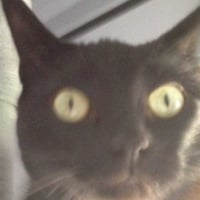Welcome to the new FlexRadio Community! Please review the new Community Rules and other important new Community information on the Message Board.
Need the latest SmartSDR, Power Genius, Tuner Genius and Antenna Genius Software?
SmartSDR v3.7.4 and the SmartSDR v3.7.4 Release Notes | SmartSDR v2.12.1 and the SmartSDR v2.12.1 Release Notes
SmartSDR v1.12.1 and the SmartSDR v1.12.1 Release Notes
Power Genius XL Utility v3.8.8 and the Power Genius XL Release Notes v3.8.8
Tuner Genius XL Utility v1.2.11 and the Tuner Genius XL Release Notes v1.2.11
Antenna Genius Utility v4.1.8
SmartSDR v3.7.4 and the SmartSDR v3.7.4 Release Notes | SmartSDR v2.12.1 and the SmartSDR v2.12.1 Release Notes
SmartSDR v1.12.1 and the SmartSDR v1.12.1 Release Notes
Power Genius XL Utility v3.8.8 and the Power Genius XL Release Notes v3.8.8
Tuner Genius XL Utility v1.2.11 and the Tuner Genius XL Release Notes v1.2.11
Antenna Genius Utility v4.1.8
If you are having a problem, please refer to the product documentation or check the Help Center for known solutions.
Need technical support from FlexRadio? It's as simple as Creating a HelpDesk ticket.
Need technical support from FlexRadio? It's as simple as Creating a HelpDesk ticket.
SmartSDR defaults to LSB on 160, 80 and 40 with WSJT-X
Kevin Conde
Member
When selecting 160, 80 or 40 meter bands with WSJT-X, my slide always defaults to LSB on those bands even though I have the mode setting in WSJT-X set to USB. Every time I got to one of these bands I have to manually reset the mode to USB. Is there a setting somewhere I'm missing?
0
Answers
-
Kevin First you should be using DIGU. Second perhaps a profile setup for WSJT could help0
-
I'm sorry, but neither answer makes any sense to me. Could you be a little more detailed? Thanks,0
-
+1 on both that Mark suggested. In WSJT-X check the item "Data/Pkt" instead of USB. the DIGU mode is best since it disables all audio filtering, which you DON'T want when running digital modes. Also, profiles are your friend - makes life a lot easier to reconfigure the radio for digital then switch back to your usual mode (SSB or CW, perhaps) by having a profile for that mode. It saves fiddling with all the settings!1
-
Down the "SmartSDR Profiles How To Guide" here to learn how to use profiles:
http://www.flexradio.com/downloads/smartsdr-profiles-how-to-guide-pdf/
1 -
Kevin,
DIGU is another "mode" available like CW, USB, LSB, DIGL, DIGU etc....
As Greg said below: DIGU is nice because it disables ALL EQ and filtering of the audio. Your audio input would likely be DAX so you would have mode set to DIGU, DAX Button on, this would be pretty much a pure digital path from WSJT-X to SSDR.
Greg has a post below on profiles. Basically you can setup a "profile" which is a set of remembered settings for each kind of thing you do. I have:
40mCW profile that sets all modes, frequencies, pans, slices, output etc for CW ops on 40m.
I also have a 40mFT8 which does the same thing but moves the frequency to 7.074 and sets DIGU, DAX input etc. It also sets the slice filter to be like 0 to 6000 hz.
So I think those are the way to go.0 -
Thanks this was very helpful when my 6600M arrives in a few weeks!!! Thanks for sharing!!!
Robert0 -
Yep. That's the ticket.... in WSJT-X Config, set it to Data/Pkt and it will always change to the correct mode when you change bands in WSJT-X.
ALSO. Set up and save Mic Profile for WSJT-X with TX Hi/Lo as 0 / 3000 (or 0 / 5000 if you also plan to use the combined JT modes). Have it set MON to ON at a low to mid level if you want to monitor your TX audio to make sure you are transmitting OK. Then after selecting DigU for the first time, select that Mic Profile, and it will remember to link that profile to DigU and you won't mess up your SSB Mic Profiles.
When you switch back to USB/LSB, it will remember your last used SSB profile.
Ken - NM9P0
Leave a Comment
Categories
- All Categories
- 246 Community Topics
- 2.1K New Ideas
- 488 The Flea Market
- 7.1K Software
- 5.9K SmartSDR for Windows
- 134 SmartSDR for Maestro and M models
- 331 SmartSDR for Mac
- 243 SmartSDR for iOS
- 222 SmartSDR CAT
- 163 DAX
- 348 SmartSDR API
- 8.5K Radios and Accessories
- 6.9K FLEX-6000 Signature Series
- 764 Maestro
- 41 FlexControl
- 836 FLEX Series (Legacy) Radios
- 733 Genius Products
- 393 Power Genius XL Amplifier
- 255 Tuner Genius XL
- 85 Antenna Genius
- 229 Shack Infrastructure
- 153 Networking
- 370 Remote Operation (SmartLink)
- 120 Contesting
- 583 Peripherals & Station Integration
- 115 Amateur Radio Interests
- 810 Third-Party Software

